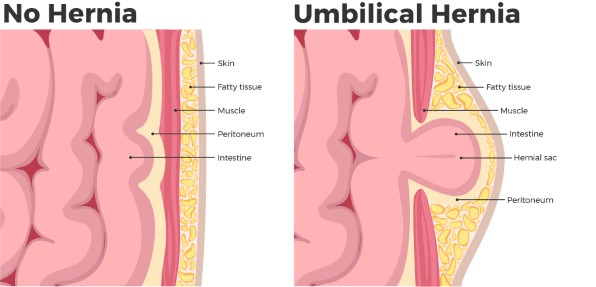
Sophia McCarthy
Operations Manager
What is a hernia?
Your abdominal area (from your lower rib cage to your hip bones) is a super important collection of strongly-knit muscles that assist you in day-to-day activities, such as lifting, sitting yourself upright (or even having a bowel movement)! These layers of muscle and strong tissue also form a barrier of protection for your internal organs. You don’t need a six-pack to have a hard-working abdomen!
So what happens in your abdomen when you have a hernia? A hernia is an unpleasant gap in your abdominal wall that allows a small part of the abdominal contents to protrude outward. It can be quite alarming when it’s first noticed by patients, but the good news is that most hernias are quite common and can be fixed through surgical intervention.
How are hernias caused?
Hernias most often occur when someone strains themselves by lifting something far too heavy or lifting it incorrectly. In rare cases, hernias can also be caused by excessive straining or pushing, such as during or immediately after labor, rather than while your belly is growing throughout pregnancy.
Where do hernias occur?
There are different types of hernias, but the most common hernias occur in the belly or groin areas. The main types of hernia are:
Ventral (Abdominal) Hernia
Any protrusion through a weakness or gap in the abdominal wall.
2. Umbilical (bellybutton area) Hernia
An umbilical hernia occurs at the bellybutton or navel area. It is also a specific type of ventral hernia.

3. Incisional Hernia
Incisional hernias are another type of ventral hernia that occur at the site of prior abdominal surgery.
4. Hiatal Hernia
Unlike the ventral hernias listed above, which bulge through the abdominal wall, a hiatal hernia occurs when the upper part of the stomach pushes up into the chest through a small opening in the diaphragm, the muscle that separates the abdomen from the chest.
5. Inguinal Hernia
An inguinal hernia is a bulge that occurs in your pelvic or groin region. This type of hernia is currently one of our most common scan requests from GPs when querying a hernia. Inguinal hernias occur because of a weakening of the muscles in the lower abdomen.
What are common signs of a hernia?
If you suspect that you may have a hernia. The most common signs are:
- Seeing or feeling a bulge along the outer surface of the abdomen.
- Possible mild pain, aching or a pressure sensation at the site of the hernia.
- This pain worsens with any activity that puts a strain on the abdomen, such as heavy lifting, running or bearing down during bowel movements.
- It is also worth noting that some patients have a bulge but do not have discomfort.
Can ultrasound diagnose a hernia?
Yes. Fortunately, ultrasound is a quick, non-invasive and cost effective method to confirm a hernia. When querying a hernia, the sonographer will take some images of the suspected area of the hernia, and will then ask the patient to take a deep breath and ‘bear down’ to try to trigger the hernia bulge. This movement is called a valsalva maneuver.
To give you an idea of just how clear ultrasound imaging is when querying a hernia, take a look at the below video captured by one of our sonographers. On the left is a static image of the area of concern. This is where the patient reported pain and a bulge. The video clip on the right of the image then shows what happened when the sonographer asked the patient to perform the valsalva maneuver. If you look closely, you will see the small part of intestine that protrudes through a gap in the muscle wall.
This study can be completed as a Soft Tissue Ultrasound for €150. All we require is a referral letter from your GP. There is no preparation required for this scan, but we do advise wearing comfortable clothing to the appointment that can be moved or lowered for imaging.
SOURCES AND FURTHER READING
Hernia During Pregnancy – whattoexpect.com
How to Tell if You Have a Hernia – John Hopkins Medicine
